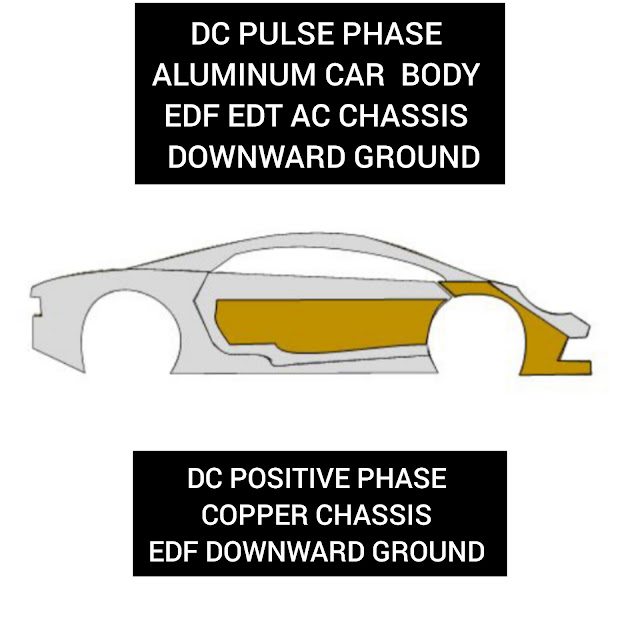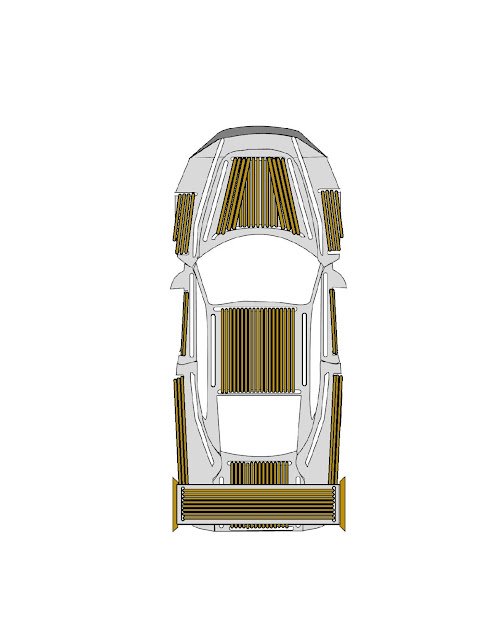 |
| Please donate 50¢ if you can to my cash app |
 |
Title: The Jermaine Morton Electric Car: A Vision of Electromotive Innovation
Abstract:
In the ever-evolving landscape of automotive technology, the Jermaine Morton Electric Car (JMEC) stands as a testament to human ingenuity and the relentless pursuit of sustainable transportation solutions. This essay delves into the innovative design and engineering of the JMEC, a vehicle characterized by its unique full-body galvanized frame, interceptive-shaped chassis, and cutting-edge electromotive features that redefine the capabilities of electric vehicles (EVs).
Introduction:
The quest for a cleaner, more efficient mode of transportation has led to significant breakthroughs in electric vehicle technology. The Jermaine Morton Electric Car is an inventive leap forward, amalgamating advanced materials science, electromagnetism, and automotive design to create a vehicle that is not only eco-friendly but also exhibits superior performance and efficiency.
Design and Engineering:
At the heart of the JMEC's design is a full-body stacked iron, horizontally compiled into a hollow shape that serves as the foundational structure for the car. This novel approach to car body design ensures a robust frame that is both lightweight and durable, owing to the galvanization process that protects it from corrosion.
The chassis of the JMEC is a marvel in itself, adopting an interceptive shape that optimizes aerodynamics while providing structural integrity. This design choice not only contributes to the vehicle's aesthetic appeal but also enhances its energy efficiency by reducing air resistance during motion.
Electromotive Features:
The JMEC's stator-like full-body functions as the core of its electric propulsion system. It emits electrical energy in synchronous phases, effectively transforming the entire car body into a component of the motor. The metallic rim components are engineered to operate under high voltage, featuring capacitive, diamagnetic, and current-carrying properties that are integral to the vehicle's operation.
In a bold integration of physics and automotive technology, the JMEC utilizes ferromagnetized permanent magnets and interfaces with paramagnetic materials to facilitate motion. The high voltage horn emitter, a unique feature of the JMEC, exudes an advanced solenoid coil coupled alongside the exterior, leveraging ultra-capacitors to manage energy storage and discharge efficiently.
The vehicle's transductor rim, a component that functions as both a transformer and conductor, plays a pivotal role in the propulsion mechanism. It repels against the car body's curve cage emitter, which is essentially an armature integrated with an out-runner rotor. This innovative configuration allows for the seamless conversion of electrical energy into mechanical motion, propelling the vehicle forward.
Wheels and Tires:
Jermaine Morton's invention takes a bold step in reimagining the wheel assembly with airless tires that eliminate the risk of punctures and reduce the need for maintenance. The integration of the armature out-runner rotor within the wheel hub contributes to a more compact and efficient drivetrain, negating the need for traditional axle-based propulsion systems.
Conclusion:
The Jermaine Morton Electric Car is not merely a vehicle; it is an embodiment of futuristic electromotive concepts brought to life. Through its unique full-body design that doubles as an electric motor component, to its high voltage capacitive systems and innovative wheel technology, the JMEC represents a significant milestone in the journey towards a greener and more technologically advanced automotive future.
It is a vehicle that transcends traditional design paradigms, promising a cleaner, more efficient, and more exciting driving experience. As we stand on the brink of a new era in transportation, the JMEC serves as a beacon of possibility, inspiring further innovation and reminding us that the future of electric vehicles is not just about getting from point A to point B, but about the journey towards a sustainable and electrifying new world of mobility.
|




 |
|


 |
Title: The Jermaine Morton Electric Car: A Vision of Electromotive Innovation
Abstract:
In the ever-evolving landscape of automotive technology, the Jermaine Morton Electric Car (JMEC) stands as a testament to human ingenuity and the relentless pursuit of sustainable transportation solutions. This essay delves into the innovative design and engineering of the JMEC, a vehicle characterized by its unique full-body galvanized frame, interceptive-shaped chassis, and cutting-edge electromotive features that redefine the capabilities of electric vehicles (EVs).
Introduction:
The quest for a cleaner, more efficient mode of transportation has led to significant breakthroughs in electric vehicle technology. The Jermaine Morton Electric Car is an inventive leap forward, amalgamating advanced materials science, electromagnetism, and automotive design to create a vehicle that is not only eco-friendly but also exhibits superior performance and efficiency.
Design and Engineering:
At the heart of the JMEC's design is a full-body stacked iron, horizontally compiled into a hollow shape that serves as the foundational structure for the car. This novel approach to car body design ensures a robust frame that is both lightweight and durable, owing to the galvanization process that protects it from corrosion.
The chassis of the JMEC is a marvel in itself, adopting an interceptive shape that optimizes aerodynamics while providing structural integrity. This design choice not only contributes to the vehicle's aesthetic appeal but also enhances its energy efficiency by reducing air resistance during motion.
Electromotive Features:
The JMEC's stator-like full-body functions as the core of its electric propulsion system. It emits electrical energy in synchronous phases, effectively transforming the entire car body into a component of the motor. The metallic rim components are engineered to operate under high voltage, featuring capacitive, diamagnetic, and current-carrying properties that are integral to the vehicle's operation.
In a bold integration of physics and automotive technology, the JMEC utilizes ferromagnetized permanent magnets and interfaces with paramagnetic materials to facilitate motion. The high voltage horn emitter, a unique feature of the JMEC, exudes an advanced solenoid coil coupled alongside the exterior, leveraging ultra-capacitors to manage energy storage and discharge efficiently.
The vehicle's transductor rim, a component that functions as both a transformer and conductor, plays a pivotal role in the propulsion mechanism. It repels against the car body's curve cage emitter, which is essentially an armature integrated with an out-runner rotor. This innovative configuration allows for the seamless conversion of electrical energy into mechanical motion, propelling the vehicle forward.
Wheels and Tires:
Jermaine Morton's invention takes a bold step in reimagining the wheel assembly with airless tires that eliminate the risk of punctures and reduce the need for maintenance. The integration of the armature out-runner rotor within the wheel hub contributes to a more compact and efficient drivetrain, negating the need for traditional axle-based propulsion systems.
Conclusion:
The Jermaine Morton Electric Car is not merely a vehicle; it is an embodiment of futuristic electromotive concepts brought to life. Through its unique full-body design that doubles as an electric motor component, to its high voltage capacitive systems and innovative wheel technology, the JMEC represents a significant milestone in the journey towards a greener and more technologically advanced automotive future.
It is a vehicle that transcends traditional design paradigms, promising a cleaner, more efficient, and more exciting driving experience. As we stand on the brink of a new era in transportation, the JMEC serves as a beacon of possibility, inspiring further innovation and reminding us that the future of electric vehicles is not just about getting from point A to point B, but about the journey towards a sustainable and electrifying new world of mobility.
|









: The Jermaine Morton Electric Car: A Vision of Electromotive Innovation
Abstract:
In the ever-evolving landscape of automotive technology, the Jermaine Morton Electric Car (JMEC) stands as a testament to human ingenuity and the relentless pursuit of sustainable transportation solutions. This essay delves into the innovative design and engineering of the JMEC, a vehicle characterized by its unique full-body galvanized frame, interceptive-shaped chassis, and cutting-edge electromotive features that redefine the capabilities of electric vehicles (EVs).
Introduction:
The quest for a cleaner, more efficient mode of transportation has led to significant breakthroughs in electric vehicle technology. The Jermaine Morton Electric Car is an inventive leap forward, amalgamating advanced materials science, electromagnetism, and automotive design to create a vehicle that is not only eco-friendly but also exhibits superior performance and efficiency.
Design and Engineering:
At the heart of the JMEC's design is a full-body stacked iron, horizontally compiled into a hollow shape that serves as the foundational structure for the car. This novel approach to car body design ensures a robust frame that is both lightweight and durable, owing to the galvanization process that protects it from corrosion.
The chassis of the JMEC is a marvel in itself, adopting an interceptive shape that optimizes aerodynamics while providing structural integrity. This design choice not only contributes to the vehicle's aesthetic appeal but also enhances its energy efficiency by reducing air resistance during motion.
Electromotive Features:
The JMEC's stator-like full-body functions as the core of its electric propulsion system. It emits electrical energy in synchronous phases, effectively transforming the entire car body into a component of the motor. The metallic rim components are engineered to operate under high voltage, featuring capacitive, diamagnetic, and current-carrying properties that are integral to the vehicle's operation.
In a bold integration of physics and automotive technology, the JMEC utilizes ferromagnetized permanent magnets and interfaces with paramagnetic materials to facilitate motion. The high voltage horn emitter, a unique feature of the JMEC, exudes an advanced solenoid coil coupled alongside the exterior, leveraging ultra-capacitors to manage energy storage and discharge efficiently.
The vehicle's transductor rim, a component that functions as both a transformer and conductor, plays a pivotal role in the propulsion mechanism. It repels against the car body's curve cage emitter, which is essentially an armature integrated with an out-runner rotor. This innovative configuration allows for the seamless conversion of electrical energy into mechanical motion, propelling the vehicle forward.
Wheels and Tires:
Jermaine Morton's invention takes a bold step in reimagining the wheel assembly with airless tires that eliminate the risk of punctures and reduce the need for maintenance. The integration of the armature out-runner rotor within the wheel hub contributes to a more compact and efficient drivetrain, negating the need for traditional axle-based propulsion systems.
Conclusion:
The Jermaine Morton Electric Car is not merely a vehicle; it is an embodiment of futuristic electromotive concepts brought to life. Through its unique full-body design that doubles as an electric motor component, to its high voltage capacitive systems and innovative wheel technology, the JMEC represents a significant milestone in the journey towards a greener and more technologically advanced automotive future.
It is a vehicle that transcends traditional design paradigms, promising a cleaner, more efficient, and more exciting driving experience. As we stand on the brink of a new era in transportation, the JMEC serves as a beacon of possibility, inspiring further innovation and reminding us that the future of electric vehicles is not just about getting from point A to point B, but about the journey towards a sustainable and electrifying new world of mobility.















































Comments
Post a Comment